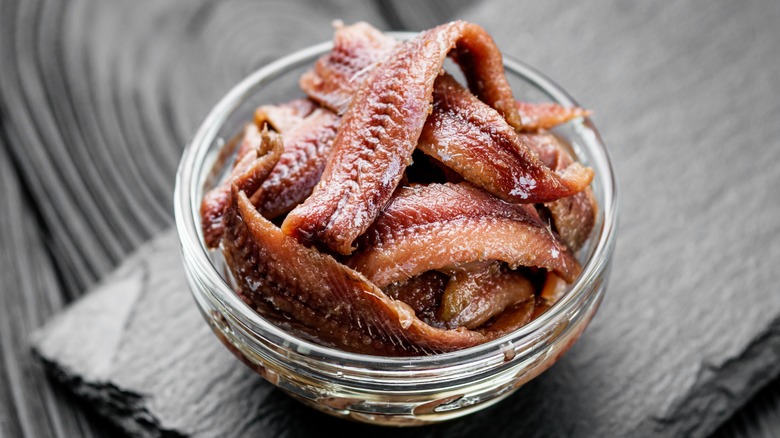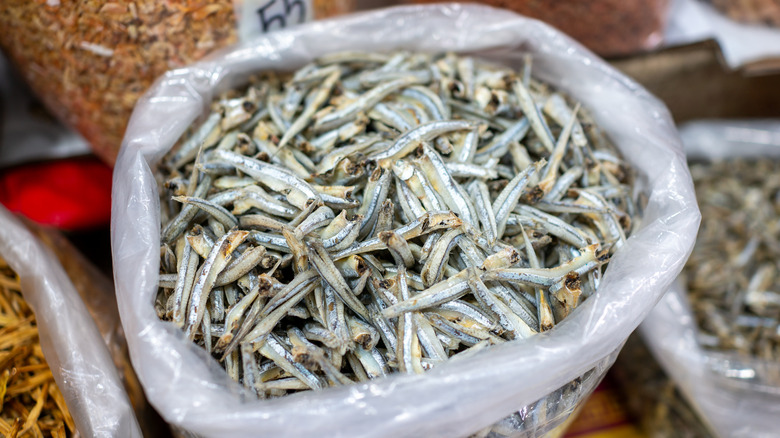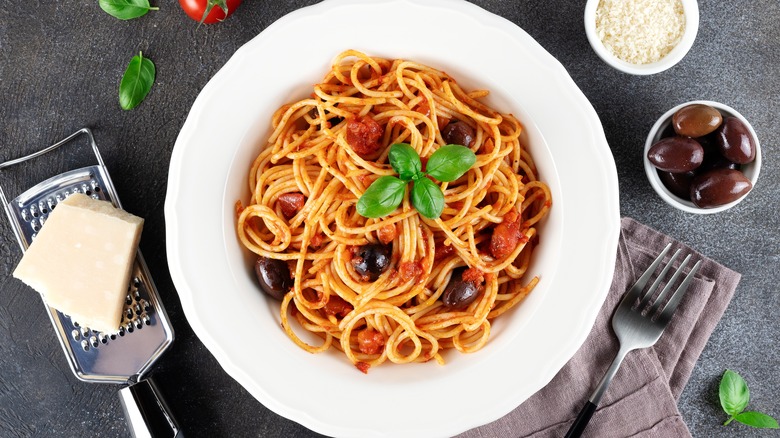Are Canned Anchovies Cooked Or Raw?
Anyone who has ever seen an episode of Teenage Mutant Ninja Turtles may be familiar with the bad rap anchovies have long suffered in the past. But the truth is, these tiny little fish are not just economical, super versatile, and supremely tasty. They're foundational to so many delicious dishes, from homemade caesar dressing to versions of herbaceous salsa verde, and enjoyed by cultures all over the world.
And while the small but mighty anchovy may finally have begun to earn the respect it deserves (thanks to increasing familiarity with the many ways to use tinned fish that you should know about), there are still questions about how those members of the Engraulidae family are prepared, packaged, and produced, and one lingering inquiry for some is whether these fish are cooked or raw. The answer is that the anchovies you find in a tin are actually cured, as opposed to other packaged products that are cooked or pasteurized and sterilized in some way. And that process doesn't just make them safe to eat but also contributes to their delicious and so satisfying qualities.
How anchovies are prepared
So, if anchovies aren't cooked, how can they be safe to eat? Preparing anchovies to be packaged and shipped out to retailers relies on a time-tested preservation practice of curing. You may be familiar with curing from meats like prosciutto, but essentially the strategy is to pack these swimmers in salt, which helps inhibit the growth of microbes and retard any chemical reactions that might be problematic for the consumer's health.
The fish are first cleaned and prepared, and then this all-important salting step can take up to 8 months before they're considered ready. The bonus of salt-curing is that it contributes to the anchovy's signature super salty character, all while sealing in the fish's natural flavors and tenderizing filets. This means they become soft and creamy, which makes them super easy to eat and enjoy, especially in recipes that require you to smash them up or make a paste. From there, they're either canned in oil (sometimes with seasonings) or more saltand sent out into the world.
Anchovies can also be cured in vinegar and packed in oil, which will have slightly different qualities. They'll be less salty, with a more tame and mellow flavor, making them a little more approachable for anchovy amateurs.
Storage and use of your anchovies
While anchovies should be ready to eat right out of the can, like any packaged food, it's important to note of any signs of spoilage. Keep an eye out for sensory cues like off-colors (they should be silver or blue-ish, not yellow or brown), smells inconsistent with their typical fresh and slightly fishy smell, or any consistency you might call sliminess. You definitely want anchovies that don't exhibit any sour flavors.
Store your anchovies in an airtight container, like a cupboard, in a place that protects them from light and heat. Once opened, it's good practice to keep them in the fridge, and you've got about 2 to 3 weeks to enjoy them at their best.
Once you have your anchovy inquiries put to rest, you can get to the good part: eating them. Perhaps the simplest way is to lay those filets over slices of pizza (just don't tell the Ninja Turtles) or on buttered toast for a super classic Italian preparation. You can also whip up some pasta puttanesca, or take a world tour with a French-inspired salade niçoise, Japanese candied anchovies with a honey-soy glaze, or the Indian dish Kerala Netholi Fry, which features marinated filets along with spices fried in coconut oil.


